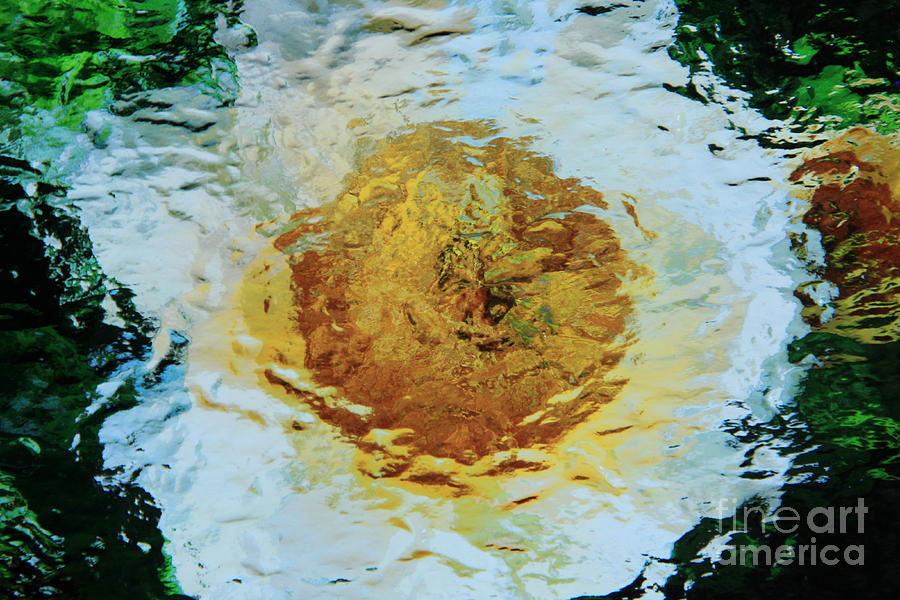
Sun and Moon Peony Impression

by Jeanette French
Title
Sun and Moon Peony Impression
Artist
Jeanette French
Medium
Photograph - Photography
Description
Sun and Moon Peony Impressions is a photograph of the unusual Sun and Moon peony, with its deep yellow central ball surround by fresh moonlit white petals. This image was photographed through a glass panel to achieve this beautiful, soft, watery, impressionistic effect. Fun!
The peony is graced with heavenly fragrance and beloved in Asia, the lovely peony is sometimes regarded as the Asian equivalent of a rose. Peony is named for the Greek, Paeon, who was a student of Aesclepieus, the great healer and god of medicine. The tale is told that Aesclepies grew jealous of Paeon and his ability to heal. Zeus transformed him into a flower to rescue him. It is no wonder that ancient Greek medicine used peony to heal many different complaints. Peony carries the energy of love and healing and, energetically, peony is also an excellent cleanser and protector.
The flowering plant, peony, is a native of Asia, Southern Europe and Western North America. The shrub-like plants exhibit compound, deeply lobed leaves and large, fragrant flowers in the late spring to early summer. In the cold winter weather, herbaceous peonies die back above ground. There are some tree forms that lose leaves, but their woody branches remain. Peony root is frequently used in the traditional medicine practices of Asia, including Korea, China and Japan. The plant’s biological activity includes antioxidant, antitumor, antipathogenic effects as well as protection for the cardiovascular and central nervous systems.
Spring, is peony season and a time of growth, renewal, rejuvenation and new life, is the climatic season that follows the typically three coldest months of the year, winter, and precedes summer, typically the three warmest months of the year. Meteorologists usually define three month season of spring as March, April and May in the northern hemisphere and September, October and November in the southern hemisphere. In either case, spring is the result of increasing warmth from the change in the orientation of the Earth’s axis in relationship to the Sun. The astronomical March Equinox is frequently used as the marker for the first day of spring in the north. Erratic, unstable and severe weather patterns are most common in the spring due to the collision of warm and cool air masses. In the U.S., Tornado Alley is most active at this time of year.
In some regions in the Northern Hemisphere, the astronomical March equinox (varying between 19 and 21 March) is taken to mark the first day of spring, and the Northern solstice (around 21 June) is taken as the first day of summer. Human beings have celebrated the return of the lengthening days of light and the increasing warmth with festivals from the beginning of time. Some of these celebrations include Carnival – South America, Easter - Christian, Passover - Jewish, Holi – Nepal, India, Mayday, Beltane - Europe, Sinhalese New Year – Sri Lanka and Nevruz -Turkey.
Jeanette French, paintings, photographs, canvas prints, framed prints, metallic prints, acrylic prints, greeting cards, gift cards, fine art.
Creating portals of light, love, joy, beauty, compassion, hope and gratitude is my lifelong passion and gift for the earth, hence the name of my art business, For the Earth. My mother painted in oils when I was young and encouraged my own drawing, painting and handcrafting in all forms. My father, the photographer, gave me my first camera at age 8. As a result of these loving influences, I am a lifelong student of both mediums. I am grateful to my wonderful Pacific NW painter teachers, Stan Capon and Edi Olson, for training my eye and technique. I hope you will enjoy this image as much as I enjoyed its creation. More gifts for the earth can be found at this website, jeanette-french.pixels.com.
Uploaded
March 7th, 2016
Statistics
Viewed 394 Times - Last Visitor from New York, NY on 04/22/2024 at 8:05 AM
Embed
Share
Sales Sheet








































